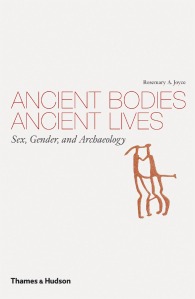I had a hard time teaching our graduate introduction to theory in archaeology this fall. One of those things that just happens sometimes: the students and I were on different wave-lengths, and one student in particular deeply resented being asked to think theoretically: “why can’t we just let things speak for themselves”, she said at one point.
Among those articles that the students simply seemed not to get: Elizabeth Brumfiel’s amazing, transformative Distinguished Lecture for the Archaeology Division of the American Anthropological Association: “Breaking and entering the ecosystem: Gender, class, and faction steal the show”. (If you have access to JSTOR, here’s a stable URL link.)
Brumfiel gave her lecture in 1991. She was the third Distinguished Lecturer of the AAA, the first woman. Postprocessual archaeology was still a British import viewed with intense suspicion in the US. Reading the Past was first published that year. So was Meg Conkey and Joan Gero’s Engendering Archaeology.
Brumfiel, of course, had been a participant in the 1988 Wedge Conference that led to Engendering Archaeology. Her contribution to the 1991 volume, “Weaving and Cooking: Women’s production in Aztec Mexico”, is one of the articles my students will read and discuss this spring in Archaeology of Sex and Gender. It wasn’t my first contact with her exciting work on Aztec society and gender: in 1990, I was part of a AAA session in which Liz delivered her classic paper, “Figurines, Ideological Domination and the Aztec State”.
For me, these papers were reinforcement that what I was trying to do was on the right track: the combination of looking at everyday practices at the household level and visual media that in some situations might have promoted gender ideologies.
But it is the American Anthropologist publication of her Distinguished Lecture that I think archaeology grad students today need to read to really understand both the productive nature of critiques of processual archaeology around 1990, and the fact that these critiques did not form, and do not form today, a single unified school of thought.
Liz’s work was securely grounded in Marxist approaches to political economy. At the 1994 AAA meeting in Atlanta, as discussant of my paper “High Culture, Mesoamerican Civilization, and the Classic Maya Tradition”, she gave me an encouraging set of comments– but she also suggested that what I was doing “is really just political economy”. It took me a while to realize that was also meant as a positive comment. What Liz did herself, and wanted to be sure others did, was to rigorously think through the wider grounded context, and she could be counted on to be critical if the work I did seemed to be getting too abstract and symbolic.
Liz combined her rigorous materialism with strong feminist anthropological commitments. Her Distinguished Lecture cited the work of anthropologists Annette Weiner and Jane Schneider on cloth, work that pursued new analyses of kin-mediated social relations and the role of textiles in negotiating them. Christine Ward Gailey’s remarkable materialist work on transformation from kinship-based to state societies supported the argument. She also brought Irene Silverblatt’s analyses of the evolution of states and women’s roles in them into the discussion. Henrietta Moore’s now-classic Space, Text and Gender made an appearance. The work of Rayna Rapp also provided feminist theoretical grounding for Liz’s paper.
In it, she makes a strong, compelling argument for taking the actions of men and women seriously, replacing what she suggested were models overly-dependent on systems with models that would, as she said in her conclusion,
enable us to create a more humane archeology, an archeology that will acknowledge the creativity and discretion that women and men, subjects and rulers have exercised in the past to fashion their livelihoods and promote their well-being.
Today, a whole generation of students can take this goal for granted. They don’t have to fight to have this kind of thinking accepted as viable and important.
I was one of the beneficiaries of her advocacy, not just a recipient of the encouragement provided by her own writing. When the manuscript for my book, Gender and Power in Prehispanic Mesoamerica, was under review by the University of Texas, Liz was one of the readers. She gave me a ton of great specific comments, but the most important thing she did was to start her review with an endorsement: “This is a big, important book”, she wrote. That mattered, not just to the editorial board that approved the book, but to me: to have a scholar of Liz’s rigor appreciate what I was doing– including the parts where I diverged from the feminist theories she used, and turned to the more radical work of Judith Butler– mattered.
And I know I am not alone. Liz Brumfiel will always be remembered.


Rosemary Joyce
January 5, 2012
The Anthropology Report blog has posted a bibliography with links to posts about the death of Liz Brumfiel. I urge all readers to share that link widely.
Rosemary Joyce
January 6, 2012
Two more comments about Liz, both testifying to what we all know: her generosity:
Middle Savagery
and
Applying Anthro